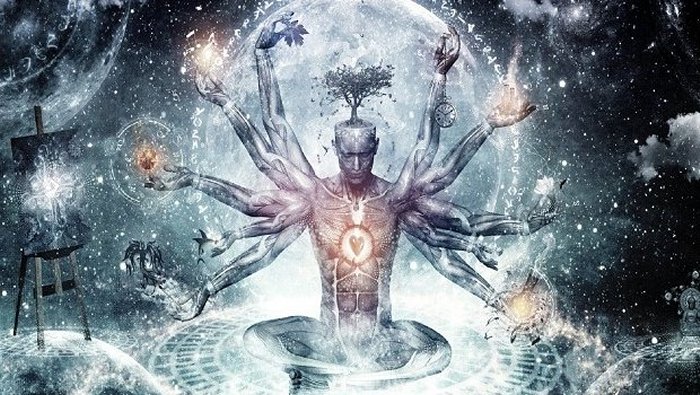Is There A Connection Between Birthmarks And Reincarnation?
– Millions of people around the world believe in live in reincarnation.
The idea that we have lived before and will live again after we die is thousands of years old, but is there really a connection between birthmarks and past lives?
Reincarnation is a religious or philosophical concept that the soul or spirit, after biological death, begins a new life in a new body that may be human, animal or spiritual depending on the moral quality of the previous life’s actions.

Dr. Ian Pretyman Stevenson (1918 – 2007), a Canadian American psychiatrist became known internationally for his research into reincarnation. He believed that not only emotions, memories but also physical injuries in the form of birthmarks, can be transferred from one life to another. His theories were based on the studies of 210 cases of children. In time he became convinced that birthmarks hold some significance to a past life.
In his science paper Birthmarks and Birth Defects Corresponding to Wounds on Deceased Persons, Dr. Stevenson wrote that “almost nothing is known about why pigmented birthmarks (moles or nevi) occur in particular locations of the skin. The causes of most birth defects are also unknown.
About 35% of children who claim to remember previous lives have birthmarks and/or birth defects that they (or adult informants) attribute to wounds on a person whose life the child remembers.
Among 895 cases of children who claimed to remember a previous life (or were thought by adults to have had a previous life), birthmarks and/or birth defects attributed to the previous life were reported in 309 (35%) of the subjects.
Children who claim to remember previous lives have been found in every part of the world where they have been looked for, but they are found most easily in the countries of South Asia. Typically, such a child begins to speak about a previous life almost as soon as it can speak, usually between the ages of two and three; and typically it stops doing so between the ages of five and seven.”
There are several examples birthmark cases studies by Dr. Stevenson, Among them we find a boy born in India without fingers on his right hand. He remembered another life in which he was a boy who had his fingers amputated after sticking them in a fodder chopping machine.
Another example is a boy in Turkey with a malformed right ear. This boy remembered having been shot and killed at close range on that side of his head.
A boy named Maha Ram in India could remember being killed in a previous life with a shotgun fired at close range. He remembered enough details of his past life for Stevenson to find the autopsy report of the man supposedly reincarnated as Ram. The birthmarks on Ram’s chest corresponded to the bullet wounds.
Another Burmese child said that she remembered the life of her deceased aunt, who had died during surgery for congenital heart disease. This child had a long, vertical linear hypopigmented birthmark close to the midline of her lower chest and upper abdomen; this birthmark corresponded to the surgical incision for the repair of the aunt’s heart.
“Persons who reject the explanation of chance combined with a secondarily confected history may consider other interpretations that include paranormal processes, but fall short of proposing a life after death. One of these supposes that the birthmark or birth defect occurs by chance and the subject then by telepathy learns about a deceased person who had a similar lesion and develops an identification with that person. The children subjects of these cases, however, never show paranormal powers of the magnitude required to explain the apparent memories in contexts outside of their seeming memories,” Dr. Stevenson wrote.
In his book Reincarnation and Biology: A Contribution to the Etiology of Birthmarks and Birth Defects Volume 1: Birthmarks Dr. Stevenson presented his comprehensive research on this subject.
“… Based on some 30 years of research on people who claim to remember past lives, this work encompasses the full spectrum of theory and case study on the subject to date.
Early in his investigations, Stevenson became aware that some who remember past lives had birthmarks or birth defects that corresponded to wounds, usually fatal, on the person whose life was remembered.
The work suggests surprising answers to such questions as the following:
Why does someone born with a birth defect have the one he or she has, instead of another one?
Why do some children show phobias in early infancy when they have had no traumatic experiences and no model for the phobia in their family?
Why are some monozygotic (one-egg) twins markedly different from each other?
Why do many boys who later become homosexual show effeminate behavior in infancy before their parents can have influenced them to do so?
Writing as a scientist and a Western medical professional, Stevenson realizes that the idea that wounds on a deceased person can influence the embryo of a later-born baby is subversive to many assumptions of modern biology. Knowing that each individual case has some flaw or weakness, he decided to publish the entire corpus of cases of this sort.
Photographs of birthmarks and illustrations of weapons form part of the evidence in this daring and explorative research.
This work will be of particular interest to physicians, psychiatrists, biologists, and anthropologists. In addition, those concerned with paranormal phenomena and the mind-brain problem will find this work challenging…. Read more
Written by Ellen Lloyd – MessageToEagle.com



 Creators of mankind
Creators of mankind Description of “Tall white aliens”
Description of “Tall white aliens” Where they came from?
Where they came from? About hostile civilizations
About hostile civilizations The war for the Earth
The war for the Earth “Tall white aliens” about eternal life
“Tall white aliens” about eternal life Video: “Nordic aliens”
Video: “Nordic aliens” Aliens
Aliens Alien encounters
Alien encounters The aliens base
The aliens base UFO
UFO Technology UFO
Technology UFO Underground civilization
Underground civilization Ancient alien artifacts
Ancient alien artifacts Military and UFO
Military and UFO Mysteries and hypotheses
Mysteries and hypotheses Scientific facts
Scientific facts


















